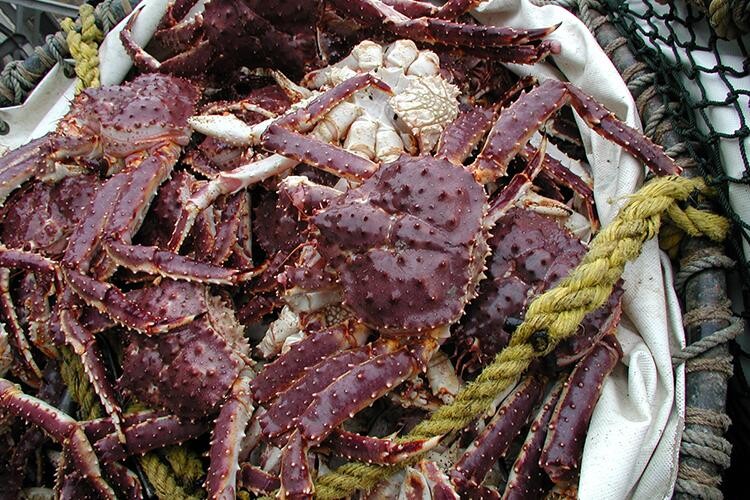Alaska’s red king crab industry has been used to riding the highest highs and lowest lows. After years of closures, Bristol Bay’s fishermen were cautiously optimistic about the 2023-2024 season. While the reopening after the two-year closure brought relief, the overall picture for the stock remains complicated.
The Alaska Department of Fish and Game (ADF&G) and the North Pacific Fishery Management Council (NPFMC) recently revised the 2024-2025 season with an acceptable biological catch of over 4,000 metric tons, and the season is set to open mid-October. That comes after data showed a slight increase in mature male biomass. The stock has seen some signs of life, but the long-term health of red king crab is still in question. ADF&G’s preliminary model points to a better-than-expected female abundance, higher than thresholds seen in previous years, though still far from historical highs.
The closure of the fishery in 2021-2022 and 2022-2023 was a necessary pause after mature female biomass plummeted to concerning lows. However, some scientists insist that the recovery isn’t happening fast enough. They have noted that recruitment, a key to the stock's future, has remained frustratingly low over the last decade.
Even with the reopening in 2023-2024, those fishing Bristol Bay’s waters were no strangers to the challenges. The mid-70s brought an abundance of red king crab, and the early 1980s saw a catastrophic decline.
Now, environmental factors are further muddying the waters. Unfavorable conditions could keep the red king crab from reaching its past stock levels. Without a significant recruitment event, the outlook could turn out bleak. NOAA Fisheries scientists and ADF&G are urging caution and continued tight management practices to protect the stock. A 20% buffer is recommended to preserve the delicate ecosystem and allow some recovery space. The 2024 Bristol Bay Red King Crab Stock Assessment stated, “Reoccurring concerns for this stock are still present (cold pool distributional shifts, declining trends in mature biomass, lack of large recruitment pulses, retrospective patterns), as well as low mature female biomass the last few years, all contribute to a recommended 20% buffer for 2024/25.”
Fishermen, already battling poor projections in other fisheries, such as salmon, are worried about their livelihoods. Bristol Bay sockeye runs are forecast to drop 18% in 2025, and Bering Sea snow crab populations are still reeling from their 2021 collapse. King crab, which was an economic pillar for many Alaskans for decades, now seems to be joining this trend of uncertainty.
But if there’s one thing Alaska’s fishermen have learned, it’s resilience. As the data continues to roll in and assessments for 2025 unfold, the hope is that careful management and sustainable practices will help keep this fishery alive—because the stakes couldn’t be higher for these communities.







